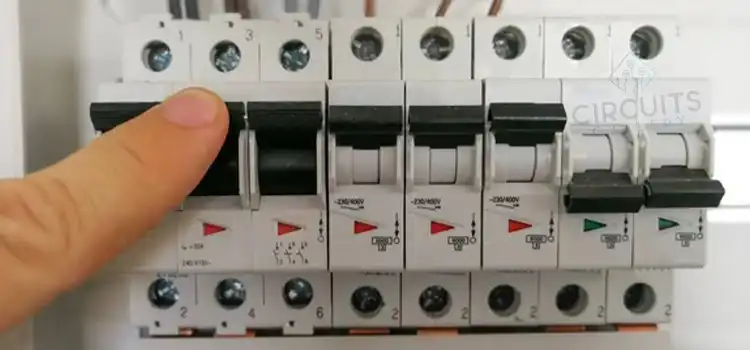What Size Breaker for 230 Volts | An In-Depth Guide
Choosing the correct circuit breaker size for an electrical system is crucial for both safety and efficiency. The circuit breaker serves as a safety net, interrupting the electrical flow in case of an overload or short circuit. The size of the circuit breaker generally depends on the specific current draw of the equipment it will serve.
For a 230-volt electrical system with a continuous load, the breaker size will be 125% of the continuous load current. This article will guide you through the steps to accurately determine the right circuit breaker size for a 230-volt system. Let’s delve into it.

What is Safety Factor (S.F)?
The Safety Factor accounts for a certain overload condition for a specific time. For instance, if a motor has a rated current of 100 A but can work at 125 A for one hour, this 25% increase is known as the safety factor.
Common Loads and Their Safety Factors
Resistive load and lighting loads: 25%
Air conditioner and heat pump: 75%
Welders: 100%
Motors: 25%
Breaker Sizing Calculator Parameters
You can choose between two methods for breaker sizing:
1. Provide Load: In kilowatts or watts.
2. Provide Current: In amps.
Steps to Calculate Circuit Breaker Size
The size of a breaker is predominantly based on the load or the amount of current a particular appliance or circuit will draw. Here’s how you can determine the breaker size:
Step 1: Determine Load Current
The first step is to determine the load current for a single-phase AC or a 3-phase AC by using the formula provided below.
Load Current, IL = PowerV
For a 230-volt system with a load of 1000 watts, the load current would be:
Load Current, IL = 1000230 = 4.35A
Step 2: Choose Circuit Breaker Size
The circuit breaker size should be chosen based on the load current. It should be capable of handling the load current without tripping. For a load current of 4.35 A, a 5 A or 6 A circuit breaker would be appropriate.
Formulas for Breaker Sizing
When current is given: I(CB) = I(A)* (1 + S.F100)
When load is given for a single-phase AC circuit: I(CB) = PowerV * p.f * (1 + S.F100)
When the load is given for a 3-phase AC circuit: I(CB) = Power1.73*VL*pf * (1+S.F100)
Solved Examples
Example 1: When Current is Given
Given: Rated current, I(A) = 20Amps, Safety Factor, S.F = 25%)
Required: Breaker current, I(CB)
Solution: I(CB) = 20 * (1 + 25100) = 25 Amps
Example 2: When Load is Given for a Single-Phase System
Given: Voltage = 230 V, Power = 1.5 KW, (S.F = 25%)
Required: Breaker current I(CB)
Solution: I(CB) = 1500230 * 0.9 * (1 +25100 )= 9.05 Amps (Approximately 10 Amps)
Why is Accurate Breaker Sizing Required?
1. Dependability: An overly sized breaker will not trip under low fault or high overloading conditions, affecting the dependability of the system.
2. Security: An undersized breaker will trip under normal conditions, affecting the security of the system.
Frequently Asked Questions and Answers
1. Why is accurate breaker sizing important?
Accurate breaker sizing is crucial for the dependability and security of the electrical system.
2. Can I use a nearby rating ampere breaker if the calculated size is not available?
Yes, you can use a nearby rating ampere breaker. For example, if the calculated breaker size is 45 amps and a 50 amps breaker is available, you can use the 50 amps breaker.
3. What happens if there’s a short circuit or overload in my 230-volt circuit?
The breaker will trip, disconnecting the circuit and preventing potential damage or fire hazards. You can reset the breaker after resolving the issue causing the short circuit or overload.
Conclusion
Selecting the right circuit breaker and understanding the safety factors are crucial to ensuring a safe and efficient 230-volt electrical system. Always consult a certified electrician and adhere to local electrical codes for accurate and safe installation.
Subscribe to our newsletter
& plug into
the world of circuits